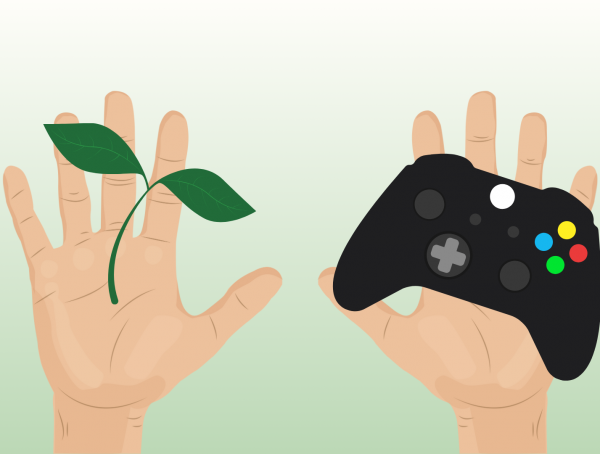The recent rise of gamification has brought forward a revisiting of the debate on the relationship between games and society. In Cassone’s article Mimicking Gamers: Understanding Gamification Through Roger Caillois, the author looks at the shift of perceptions of games from the past until the present, while introducing Roger Caillois’s views and using them to understand gamification, by observing the long-term analogies between games and societies and the role performed by mimicry.
Originating as a marketing practice, gamification developed its own theory in a rather heterogeneous way, pulling together practical lessons from practitioners, books about gaming, and a vast range of psychological theories. For the promoters of gamification, the ludic framework is an engaging and efficient one that is the perfect solution to the limits of our everyday activities. Jane McGonigal, one of the most cited authors in legitimizing the gamification movement, notes that unlike everyday life, games feature clear and simple rules and objectives, the possibility to make choices, and the freedom to experiment; they are based on fair judgement, and the effort and the results achieved by players are appropriately rewarded. These positive notions are also supported by various positive psychology theories (eg. self-determination theory, which considers the search for ‘‘competence’’ as a strong intrinsic motivator) that both provide and explanation and assesses both in-game dynamics and real-life effectiveness, highlighting the link between ludic and social dynamics. Thereby, for its promoters, gamification is always defined as the act of incorporating game elements in non-game contexts in one way or another.
In academia, however, exists another debate that lingers on a proper definition of the phenomenon and explanations for its emergence. Some of gamifications fallacies, such as the oversimplified approach its practitioners view game design; and its over-dependency of specific game genres especially free-to-play (F2P) games and Massively Multiplayer Online Games (MMOGs) are greatly contended. The vagueness of what it means to “adapt game dynamics in non-game contexts” also affirms with certain products and practices that are hardly related to ludicity, such as loyalty programs, contests, and slot machines. At the same time, academics have also observed that the gradual blending of games into contemporary culture through in-app purchases and the emergence of professional e-sports to name a few. This blending, according to academics contributed much to the successful adaptation of gamification, as more people view games to be an organic phenomenon embedded in reality instead of being separated from real life.
Gaillois’s theories, when interpreted through a wider lens of the relationship between games and culture provides a better understanding of the existing gamification debate. His theories sees a thread of commonality that both games and society shares, and suggests that in both game and culture, one can find the same principles of human activity. This shared presence of these “psychological attitudes” suggests an establishing of a long-term relationship between the world of playfulness and real life. On one hand, games emulate the serious activities that we perform in daily life, from the child’s play (eg. Barbie dolls doing daily chores) to complex digital simulations (eg. war simulation in RTS games). On the other hand, games themselves are also taken more seriously and has been taken on as a general framework to interpret, design, and shape everyday activities.
Following Gaillois’s perception of the relationship between games and society, gamification can then be understood as a process designed to make users mimic players in games and act like them. The notion of mimicry helps in addressing the limits and issues encountered by definitions of gamification, which tries to separate game elements, dynamics, and contexts from non-gameful ones. The act of making user mimic players, tied with the imitation of game elements and dynamics, blurs further the distinction perceived between ‘‘pure’’ game dynamics, elements of loyalty programs, and interactive design solutions. Through mild forms of identification, nudged by social pressure and users feedback (eg. leaderboards and social networking functions), a dramatized stage is built in real-life, in which every user can observe and measure the performance of others. Suggesting (or nudging) that everyone is given the chance to be the winner in countless competitions, both small and large, occupying our daily lives. As such, Caillois’s framework, according to the author, can be better used to understand gamification in a more comprehensive terms to guide its design and assessment.
–
Original article: http://journals.sagepub.com/doi/abs/10.1177/1555412016671063
You might also like
More from Game Research Highlights
How do you want to do this? – A look into the therapeutic uses of role-playing games
Can playing RPGs contribute positively to your wellbeing? A recent study aims to find out how RPGs are being used …
Eldritch horrors and tentacles – Defining what “Lovecraftian” is in games
H.P. Lovecrafts legacy lives today in the shared world of Cthulhu Mythos and its iconic monsters. Prema Arasu defines the …
Are Souls Games the Contemporary Myths?
Dom Ford’s Approaching FromSoftware’s Souls Games as Myth reveals the Souls series as a modern mythology where gods fall, desires …















